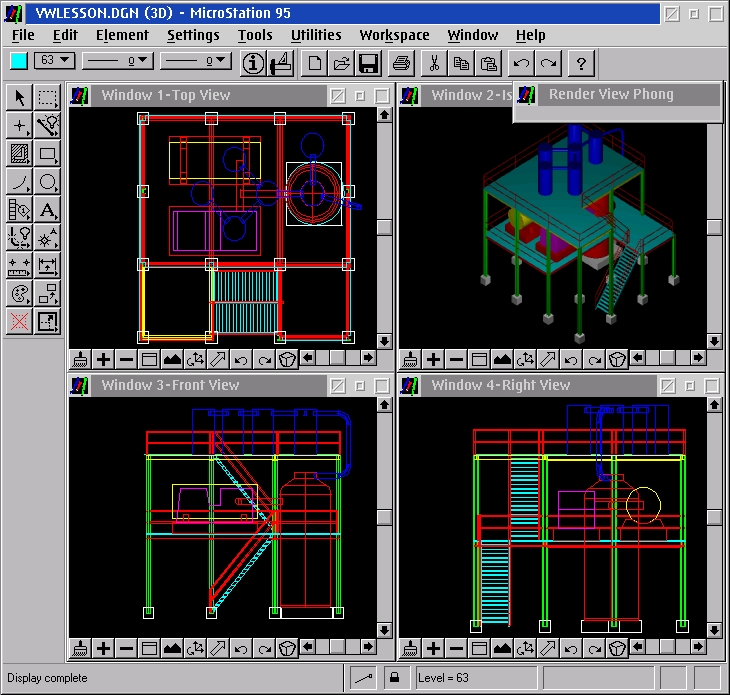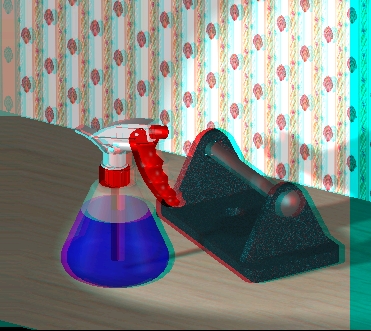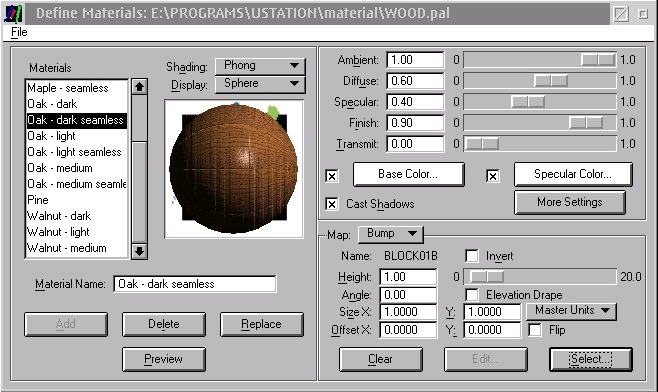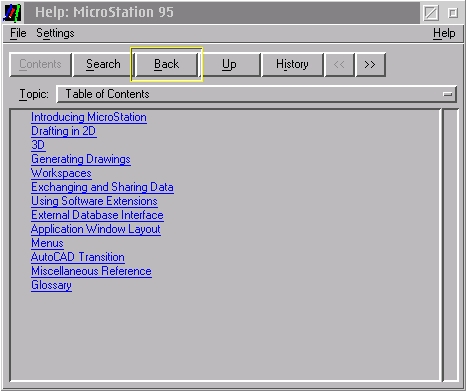
September 16, 2003
Isaac Leung (P.Eng.) got a degree in Engineering Physics followed by a Master's in Electrical Engineering after which he promptly got a job as a product engineer at a company which makes high speed datacom chips. Following the dot-com meltdown, he's back at school studying biophysics and optical properties of semiconductors. He is old enough to have cut his computer teeth on Commodore 64's and first played with OS/2 1.3 EE while at a summer job with IBM. The first PC he ever owned came with Windows 95, but he soon slapped on OS/2 Warp 3 and has been Warping ever since. In between looking for a new job, he plots to take over the world.
If you have a comment about the content of this article, please feel free to vent in the OS/2 e-Zine discussion forums.
There is also a Printer Friendly version of this page.
|
Previous Article |
|
Next Article |

CAD Part III
I never expected this CAD series to run to 3 parts, but there seems to be something new every month.Unfortunately, CadWare still haven't shown off their new web site, so no free download of BlueCAD yet. We'll keep an eye on it and let you know when it happens.
Thanks to a helpful reader, we actually got a demo of Microstation 95 to play with. I haven't had time to master this yet, so this month is only a brief introduction, just so you can see what it looks like and get an idea of what it can do.
But first, a helpful little tip if you're a CADVANCE user!
CADVANCE Fonts
In our past review, I noted that the the status bar's fonts were heavily
"pixel-ized" and was un-readable by most. The fix was to get Win-OS/2 to use
small fonts, and the lucky users of Matrox drivers supposedly had this fix
a long time ago. Here's what the status bar should look like.

Well, I recently found out that most of you already have the pre-requisites to fix this problem! If you're running Scitech's SNAP graphics drivers, then you're in luck. If you're running IBM's special SNAP SE version, this will probably work for you. If you're running the latest GRADD drivers, you're probably also good to go! I tried this with a system that had Scitech's SNAP drivers installed.
All you need to do is to dig up the SYSTEM.INI file for Win-OS/2.
It should be in \OS2\MDOS\WINOS2. Don't worry, if you've never
done this before, it's just a text file. Fire it up in your favourite text editor.
(Don't forget to quit Win-OS/2 first).
Now go to the bottom of the file and add these lines:
[GRADD]
Resources=1 ; small fonts at all resolutions
The text after the semi-colon is just a comment. For your information,
the possible settings are as follows:
Resources=0 ; (default) font size selection based on resolution
Resources=1 ; small fonts at all resolutions
Resources=2 ; large fonts at all resolutions
Re-start Win-OS/2 and your CADVANCE should be good to go!
Microstation 95
In our past mechanical CAD articles, I alluded to the very powerful Microstation 95. (Don't let the "95" fool you. It is just the name, it is available as an OS/2 application). Well, I finally manage to get a copy here at OS/2 e-Zine to get a peak at.
Since this is the first time I've seen it, this is definitely not a tutorial. More of a brief look to highlight some of its capabilities. Though if you're familiar with 3-D CAD tools, you probably won't feel out of place once you fire this up.
Installation
The installation is pretty straightforward, if unimpressive. It is in fact a text-based, DOS installation program. That had me worried for a bit that perhaps I did not have the OS/2 version. But no worries, it was correct. (You'll have to remember, of course, that this thing dates from 1995, Windows 95 was barely out the door and a lot of people were still on DOS).
You'll need to have about 65MB worth of disk space and, of course, OS/2. Given the date of the program, I would assume you could use it on OS/2 Warp 3. I tested it on MCP2 with all the latest Fixpacks and did not have any problems with it. It supports a regular mouse, of course, but also various input tablets. I didn't have one of the tablets listed, so I went with just the mouse.
It takes a little while, but when everything is unpacked, it creates a folder on your desktop with just 3 items. Microstation itself, a README, and a print server. Apparently Microstation doesn't play nice with the default OS/2 print manager. However, given the intended output (probably usually a larger plotter), this isn't too much of a negative.
When I first fired up Microstation 95, one of the first things that struck me was that it was "obviously" a port, or at least used some sort of cross-platform library. However, except for the look and the slightly different behaviour here and there, most people wouldn't know or care. It is not buggier or slower that I can tell.
The reason for this? I'm not sure, but remember back in 1995, probably the only machines (generally available) with enough power to run a CAD program of this sort were UNIX workstations and OS/2. It would've been quicker and cheaper to use a cross-platform GUI library to move the product to OS/2. I'm sure somebody else can correct my history though...
Using Microstation 95
BlueCAD is definitely a 2-D product. CADVANCE has 3-D capabilities, but I'd
probably term it as "2.5-D". Microstation? Well, here's what all the extra
dollars and disk space buys you. A fully 3-D CAD application.

First thing I did, I fired up one of the included demo files. And I got exactly what I was looking for! It all looked very "comfortable" to me 3 views (top, front, right) plus a 4th isometric view for the 3-D rendering. Nice!
I played around with it a bit, and one thing I noted (and same with BlueCAD and CADVANCE), this thing is more intuitive and easier to use than AutoCAD. I'm wondering what exactly AutoCAD has going for it that brought it such market dominance. (More features perhaps)?
Drawing parts is very easy and intuitive, just select the tool (e.g. circle) and click and drag to create and size the object. Modifications are also easily performed. With the selection tool, just click on any item you want. Once selected, you can change the line type, the colour, layer that it resides on just by selecting from the drop-down dialog boxes.
Functionality
The list of features is much too long to list here, but it basically has everything you might expect of a sophisticated 3-D CAD program. From drawing simple shapes, joining parts, measurements, etc. It even has the capability to interface to a database (like CADVANCE). A feature most individual users will never use, but if you're in the business of designing complete automobiles for instance, you need to keep a track of every part number and details of every nut and screw.
What about buildings? Architectural layout? Yes, Microstation has all those. If you check out the sample files, it has a 3-D kitchen layout (including the kitchen sink), office floorplan, entire buildings, even layout for an entire neighbourhood block. (You ought to see the 3-D rendering of the entire building, complete with lawns, trees, windows, interior lighting, the whole works)!
3-D Features
Of course, being a 3-D application, Microstation can handle 3-D objects.
But there are some niceties that you might not expect of a pure design program.
Microstation includes rendering facilities that range from the expected
simple wireframe and flat to anti-aliased Phong shading. It will even handle
stereo Phong shading.

No, don't worry, your browser isn't screwed up. That is the rendered picture. If you haven't guessed, that's meant to be a 3-D image. Yes, that's right, just put on your handy pair of 3-D glasses (the red-blue kind, not the polarizer type) and you'll get a "real" 3-D image if you choose to render your picture in Phong stereo.
While it may not be clear from the above picture, Microstation also has the capability
to handle surface/material properties.

You have the option to select a particular material pattern (e.g. wood, granite, etc) and also any bump maps that you might want. For the really detail-oriented user, you also have control over various optical properties, specular, diffuse, transparency, etc.
Animation
But wait, there's more. Microstation also has facilities to do animation. For example, you might want to generate a fly-through of a building, or a golf-course or pan around a car. Once you figure out how to use this feature, it can generate an .FLI animation for you.Lights, cameras, it can all by manipulated. The camera even has lens options so that you can specify wide-angle, fish-eye, telephoto or various others.
Documentation and Help
It's too bad there doesn't seem to be one, big softcopy manual (at least not with what I got).
Not a disaster though. As I mentioned, it is fairly easy to use if you're used to CAD programs,
and it also has fly-over help for all the buttons and icons and a reasonable on-line help
system.

As you can see, it seems to look very similar to the Windows 3.1 help system. The on-line help even has tips and hits for AutoCAD users looking to transition over.
Conclusion
Okay, I know what some of you are thinking with all those pretty 3-D pictures and animation capabilities! This is really cool and neat, we could do something with that! Yes, true. But it that is all you're looking for, something to create nice scenes and animation, I highly recommend you try out Art of Illusion. It is available, it's active, it's free and it will do what you want.
Later, hopefully I'll get time show off one or two projects from both Microstation and Art of Illusion to illustrate the differences and how you can work in each.
If you want a basic mechanical CAD program, then BlueCAD or CADVANCE will be a
better bet since it is easy to find and is free to inexpensive. But if you
really, really need the 3-D CAD capabilities, then you'll want to try
looking for a copy of Microstation 95. I'm not sure there is anything even close
to the power of Microstation 95 for us OS/2 CAD users. (Perhaps if someone can
verify the existence of the mythical CATIA 4.0 for OS/2).
Keep your eyes open, folks. Usually I dismiss any software product with a "95"
in it, figuring it is only for Windows. But if you see this rare, rare gem, try
and snap it up if you can.
|
Previous Article |
|
Next Article |